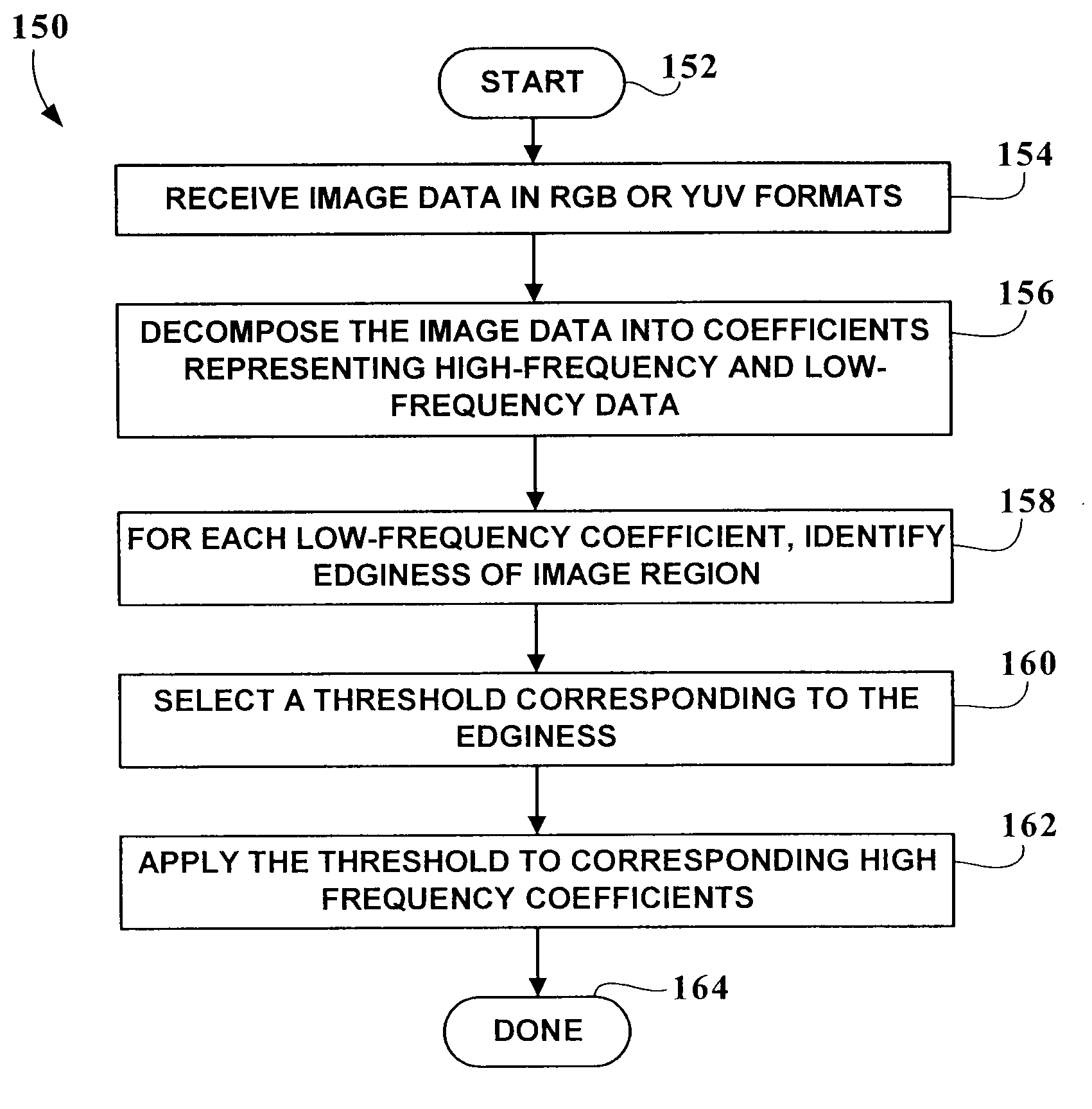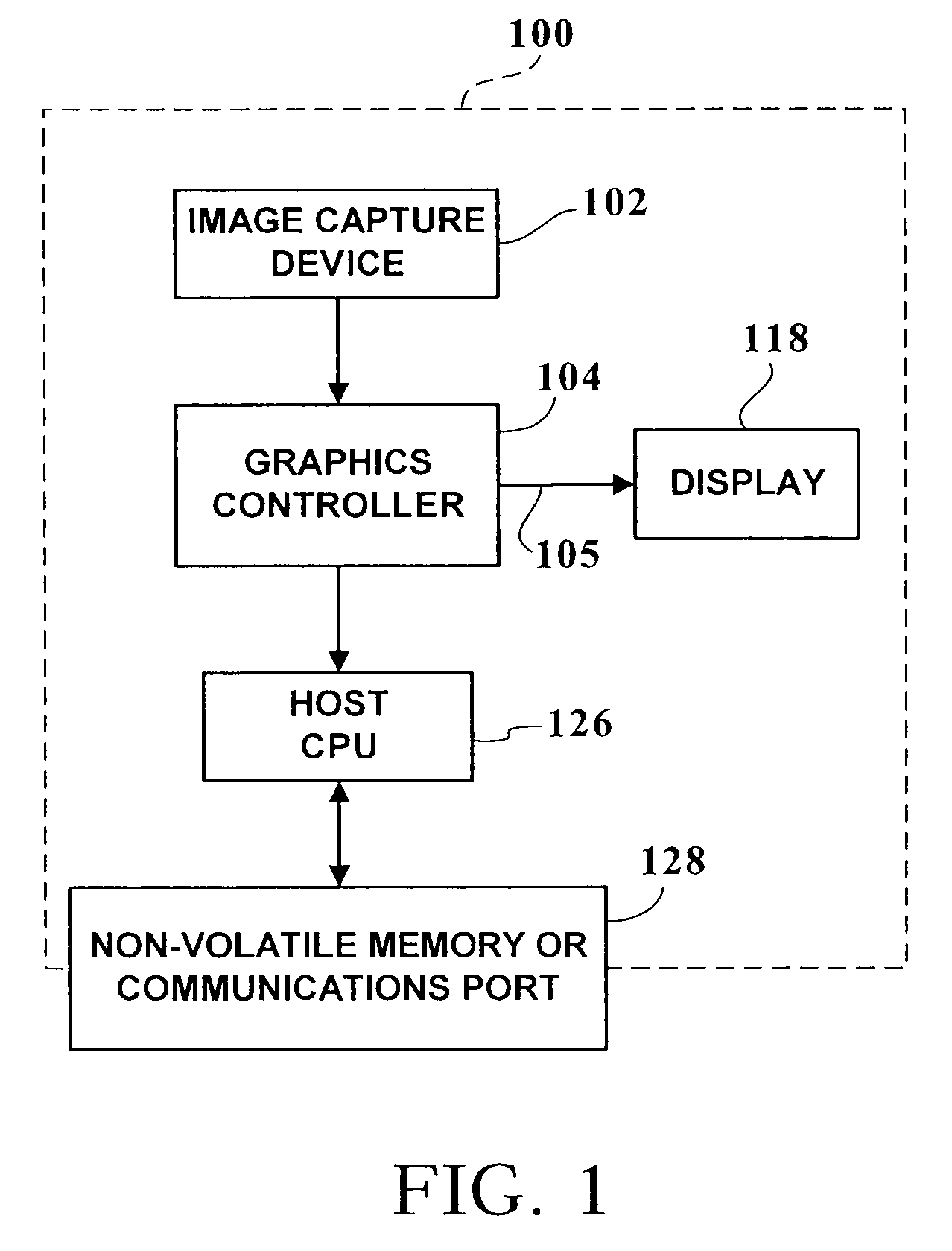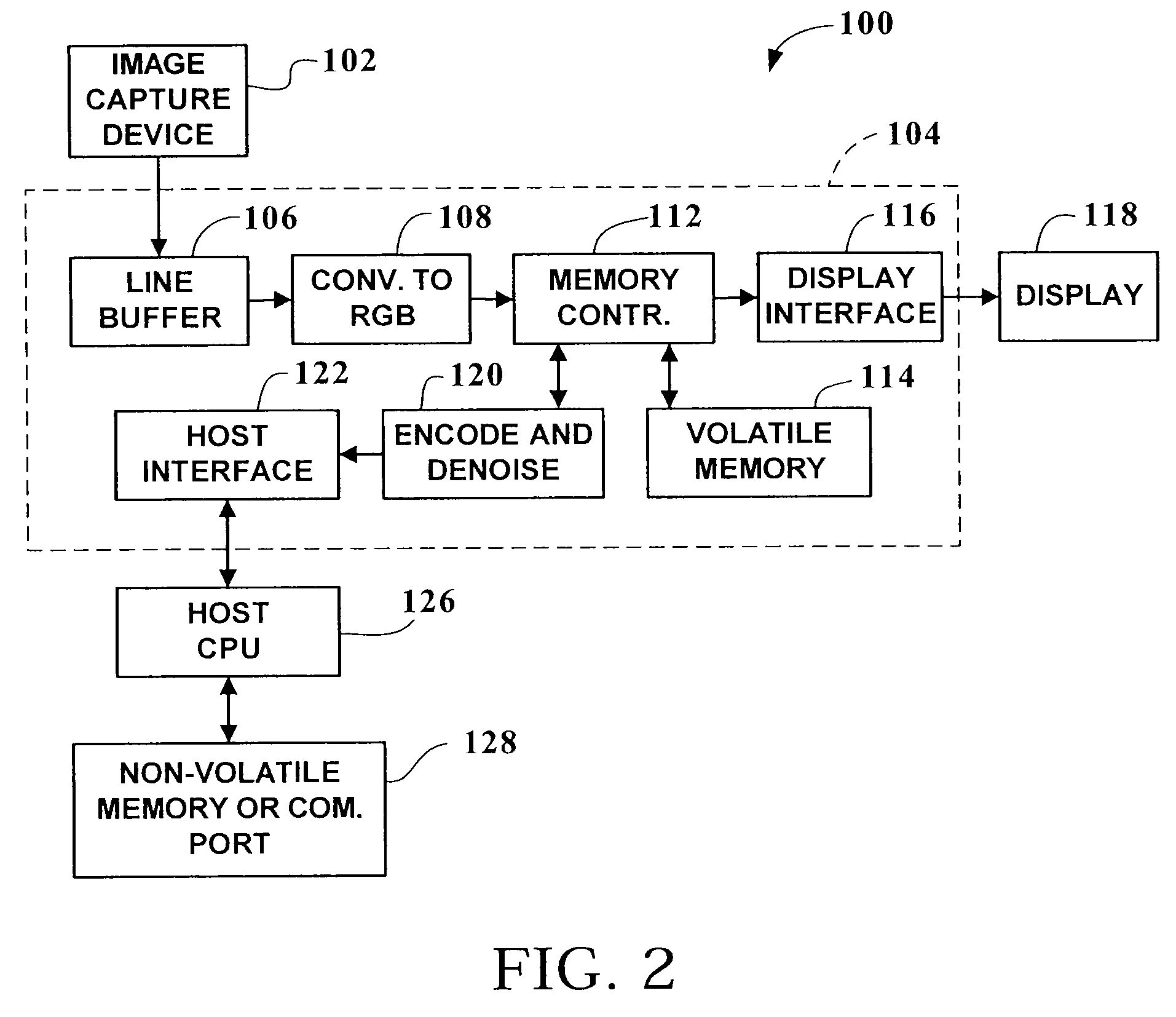Simple Adaptive Wavelet Thresholding
a wavelet thresholding and wavelet technology, applied in the field of digital imaging, can solve the problems of increasing noise, reducing size, and increasing the size of image sensors, and reducing the quality of image data
- Summary
- Abstract
- Description
- Claims
- Application Information
AI Technical Summary
Benefits of technology
Problems solved by technology
Method used
Image
Examples
Embodiment Construction
[0028]FIG. 1 shows a schematic overview of an imaging device 100. Imaging device 100 may be a digital camera, digital video recorder, or some electronic device incorporating a digital camera or video recorder, such as, for example, a personal digital assistant (PDA), cell phone or other communications device, etc. Imaging device 100 includes a graphics controller 104, a host central processing unit (CPU) 126, a display 118, and an image capture device 102. Graphics controller 104 provides an interface between display 118, host CPU 126, and image capture device 102.
[0029]The timing control signals and data lines, such as line 105 communicating between graphics controller 104 and display 118, are shown as a single line but may in fact be several address, data, and control lines and / or a bus. All communication lines shown in the figures will be presented in this manner to reduce the complexity and better present the novel aspects of the invention.
[0030]Host CPU 126 performs digital pro...
PUM
 Login to View More
Login to View More Abstract
Description
Claims
Application Information
 Login to View More
Login to View More - R&D
- Intellectual Property
- Life Sciences
- Materials
- Tech Scout
- Unparalleled Data Quality
- Higher Quality Content
- 60% Fewer Hallucinations
Browse by: Latest US Patents, China's latest patents, Technical Efficacy Thesaurus, Application Domain, Technology Topic, Popular Technical Reports.
© 2025 PatSnap. All rights reserved.Legal|Privacy policy|Modern Slavery Act Transparency Statement|Sitemap|About US| Contact US: help@patsnap.com



